Housing Stanislaus
The Housing Stanislaus initiative was launched to create a shared understanding of the needs, challenges, and opportunities associated with increasing the housing supply throughout Stanislaus County and to develop a unified and actionable framework for accelerating affordable and market-rate housing throughout the county.
Housing is crucial to all our lives, and working together, we can set a course to ensure we have the right amount and types of housing needed for residents throughout Stanislaus County.
Housing Supply in Stanislaus County: Challenges and Solutions
Stanislaus County is facing significant housing challenges, including population growth, aging housing stock, and rising home prices. This page provides an overview of the latest data, barriers to development, and proposed solutions to ensure housing accessibility for all residents.
Key Data Points
Population Growth:
-
Stanislaus County added nearly 40,000 residents between 2011 and 2021 and is projected to grow by another 10,000 by 2031.
-
Growth necessitates expanded housing options to meet demand.
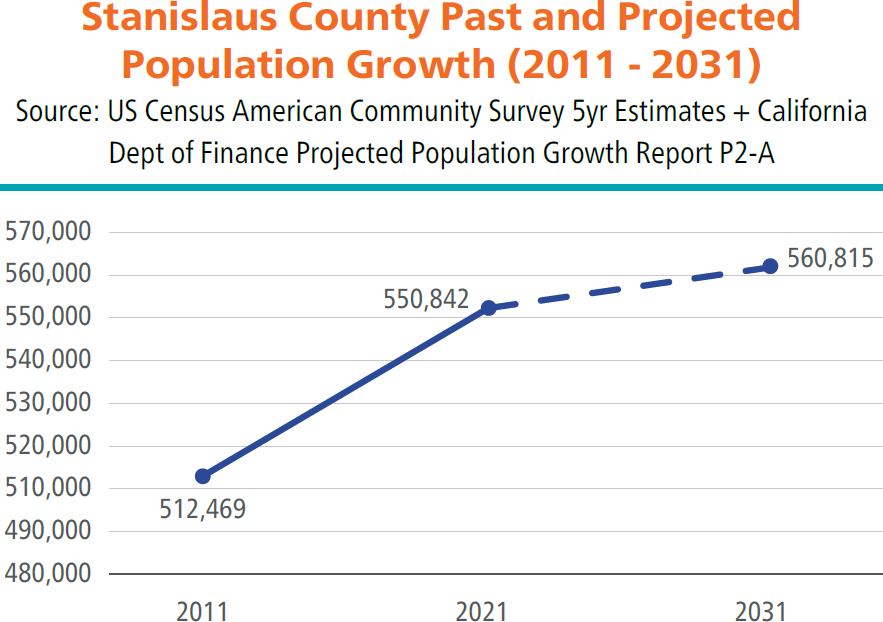
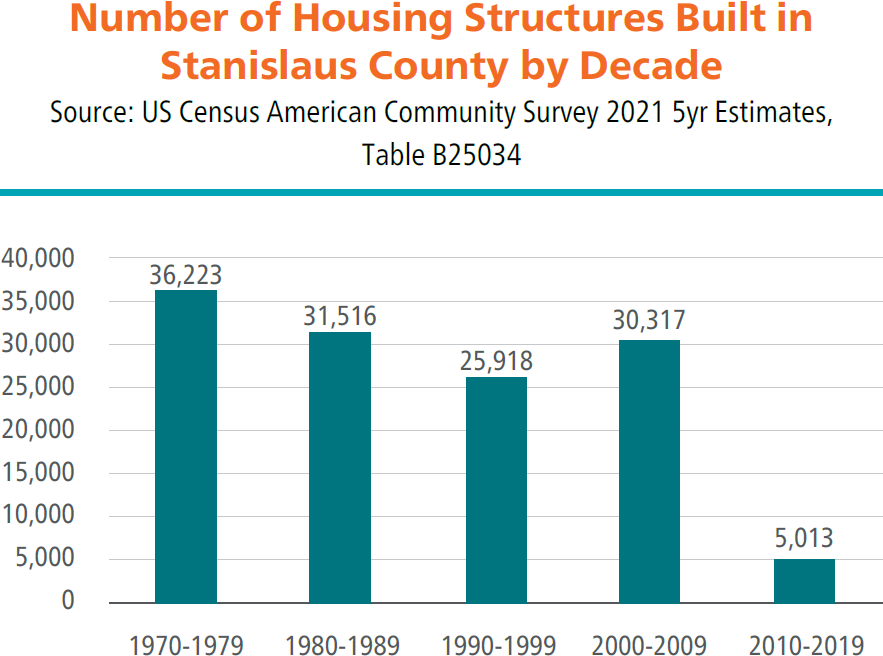
Housing Stock:
-
Nearly half (49%) of all housing units are over 40 years old.
-
New housing construction has decreased by 83% from the 2000s to the 2010s.
Home Prices and Rent:
-
Median home sale price in 2023: $461,000 (44% increase over five years).
-
Median rent in 2022: $1,450/month (25% increase since 2018).
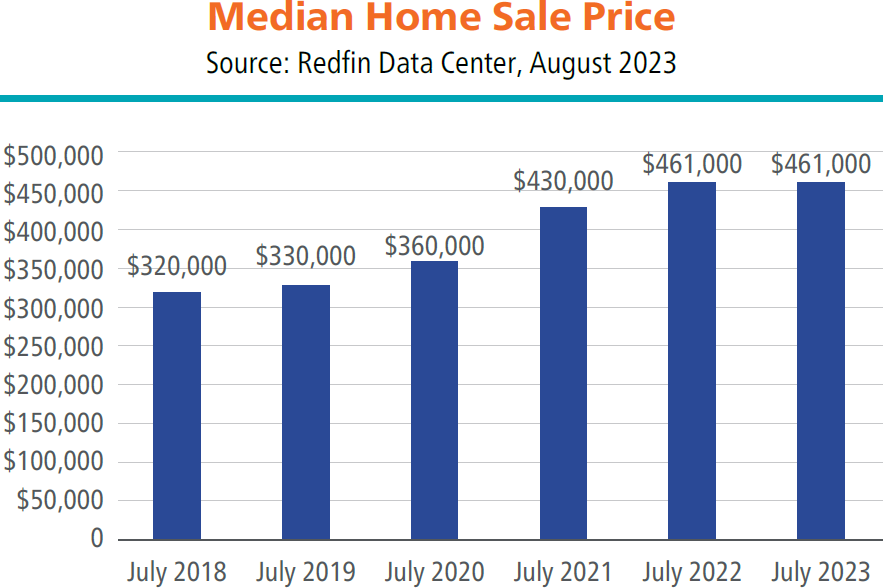
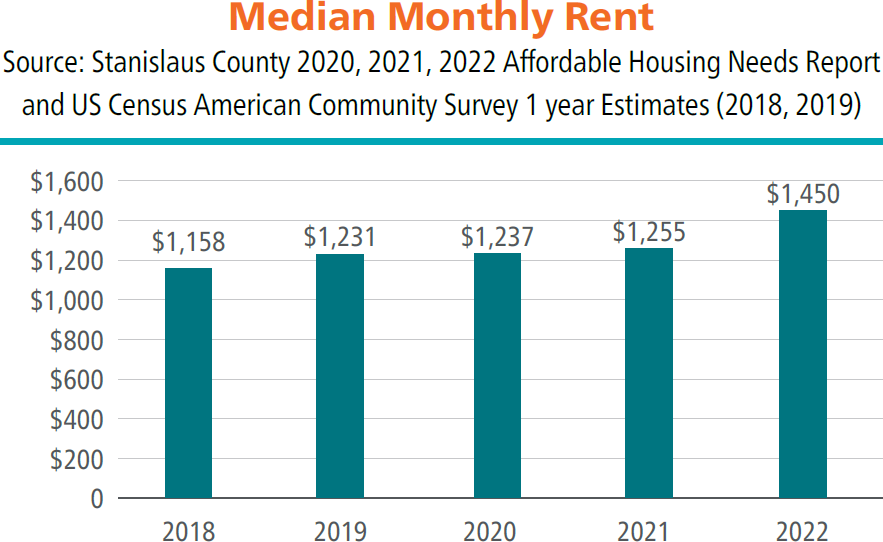
Vacancy Rates:
-
Stanislaus County's vacancy rate dropped to just 4.4%, compared to California's average of over 7%.
Barriers to Housing Development
- High development costs, including building permit fees.
- Limited availability of "missing middle" housing types (e.g., duplexes, triplexes).
- Aging infrastructure requiring preservation alongside new construction.
- Challenges in accessing financing for affordable housing projects.
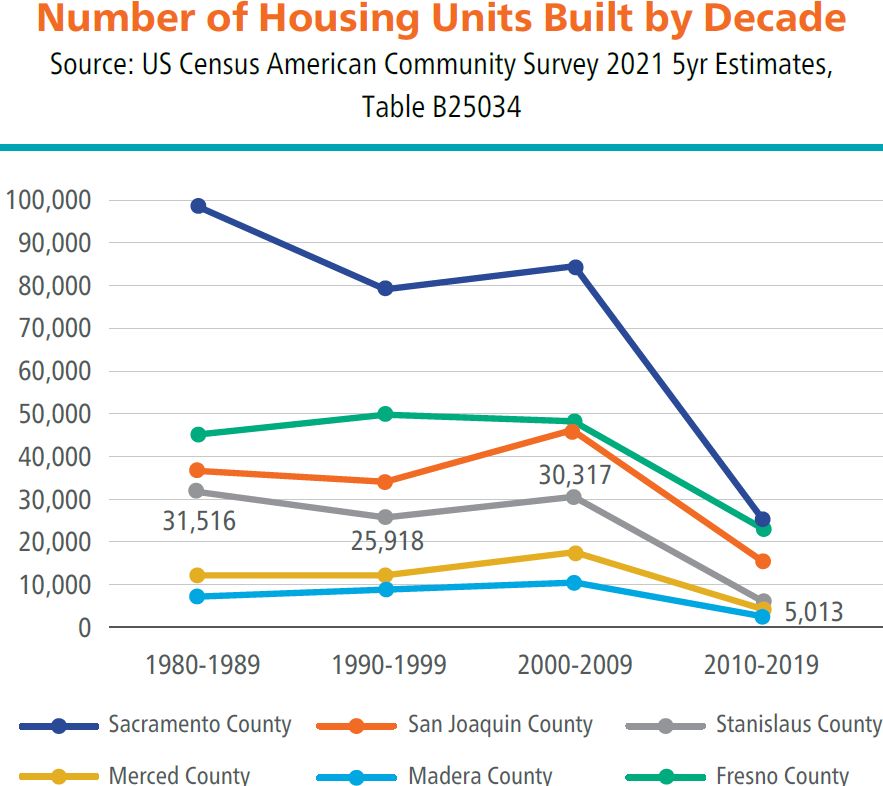
Proposed Solutions
- Expand "missing middle" housing options to diversify housing stock and meet varying needs.
- Encourage infill development on pre-zoned residential land---approximately 2,200 acres remain undeveloped.
- Streamline permitting processes to reduce costs and delays for developers.
- Collaborate with community stakeholders to identify innovative strategies for affordable housing.
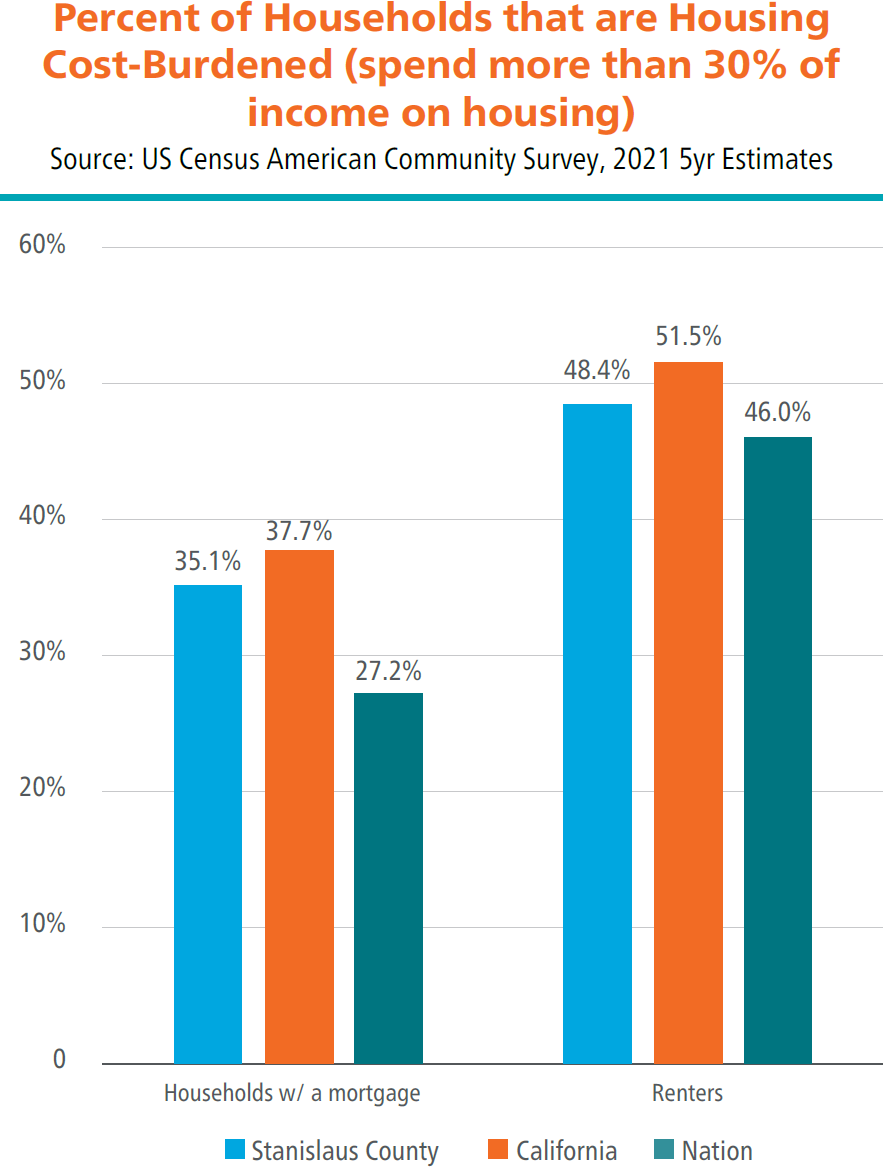
Impact on Residents
-
Increasing costs are causing more households to become housing cost-burdened.
-
Homeowners need an income of $35.37/hour to afford median monthly mortgage costs without financial strain.
-
Renters require $27.88/hour to afford median rent without becoming cost-burdened.
-
Monitoring Progress
The Housing Stanislaus initiative actively tracks progress through stakeholder engagement, data collection, and regular updates on implementation strategies.
Please use the arrows below the image to navigate through (or click through) the data elements in the dashboard.



